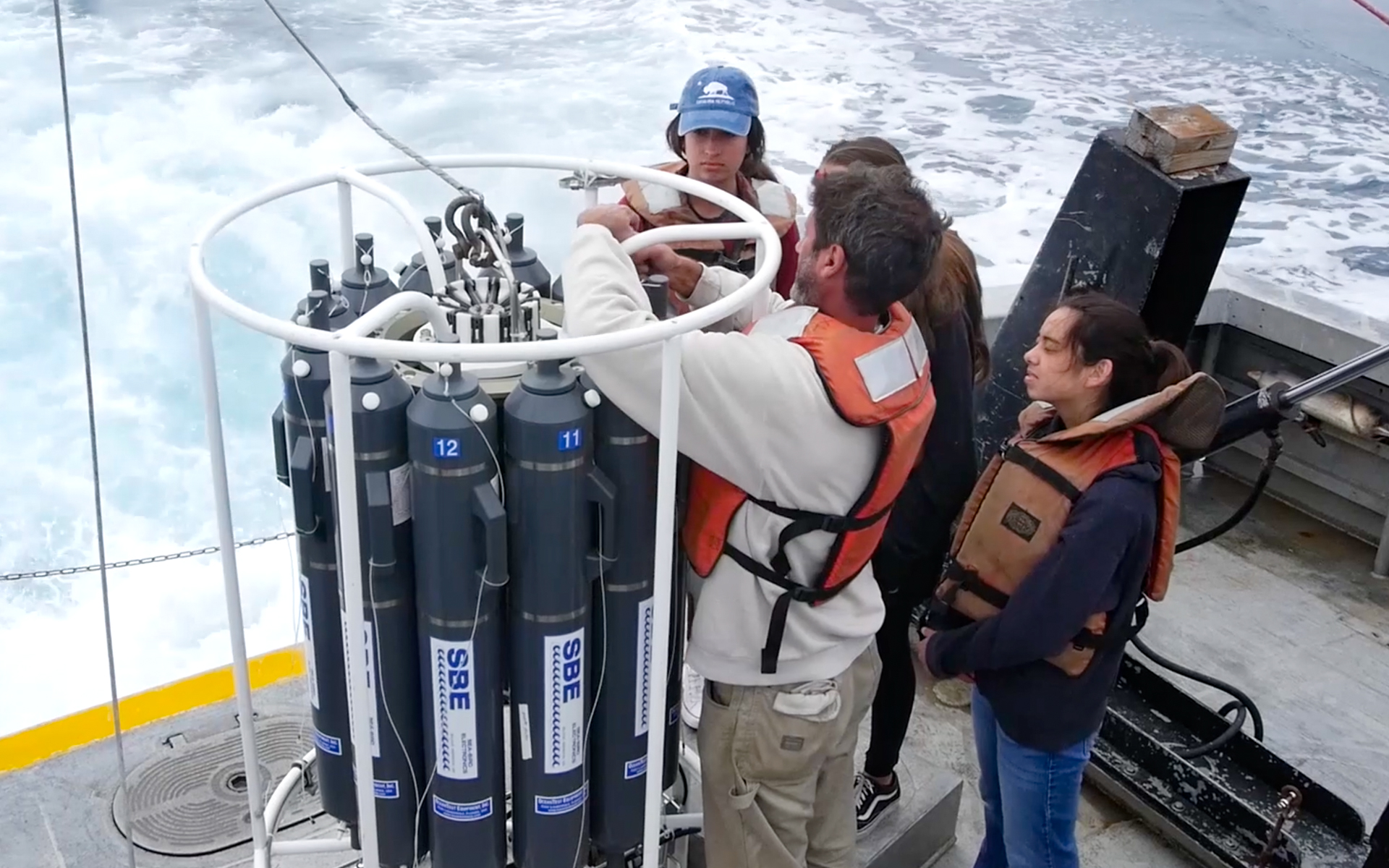Earth and Environmental Systems
Understanding a Changing Planet
Focused on the natural systems that combine to form our environment, the Earth and Environmental Systems center investigates phenomena and develops scientific insights about our changing planet. By drawing on the latest research in fields such as marine biology, oceanography, microbiology, geology, and terrestrial ecology, we can improve our understanding of the environmental changes that may imperil our future.



San Pedro Ocean Time-series: Long-term oceanographic data for a changing world
Long-term data enables effective response. With that understanding, in 1998 the Wrigley Institute established the San Pedro Ocean Time-series (SPOT) to conduct a systematic, long-term study of basic oceanographic processes in the San Pedro Channel off the coast of Southern California.
Though SPOT is one of many ongoing ocean time-series worldwide, no other project monitors ocean health so close to a major city. We are therefore uniquely positioned to track both general biological, chemical, and physical processes in the water as well as how human activity affects them.
Understanding Biogeochemical Cycling
PI: John Heidelberg, Professor of Biological Sciences and Environmental Studies
Microorganisms are at the heart of many natural processes, but even today, we have only a limited understanding of these microbes’ role in the planet’s nutrient cycles. In part, this knowledge gap is due to our inability to culture the vast majority of our world’s microbial species. This project seeks to advance scientific understanding of these unfamiliar microbes, with a particular focus on abundant, anaerobic marine microbes that have the potential for fixing carbon dioxide from the atmosphere.
Modeling Changes in Pollinator Biodiversity
PI: Laura Melissa Guzman, Gabilan Assistant Professor of Biological Sciences
Pollinators are crucial to the world’s food supply, but their numbers, species diversity, and ranges are all declining. Quantifying those declines, and identifying the causes for them, is critically important for the stability of food webs. This project uses machine learning and other statistical and computational methods to model how the distribution of pollinators has changed through time, plus which factors (such as climate change and pesticides) are doing the most harm.
Using AI to Predict Cloud Formation
PI: Sam Silva, Assistant Professor of Earth Sciences
Clouds play a major role in the global water cycle and the amount of radiation that reaches Earth’s surface. But cloud formations are notoriously difficult to predict, leaving a key gap in our ability to predict and solve climate problems. Through the use of artificial intelligence, this project seeks to close that gap by predicting cloud formations and illuminating their relationship to climate.
Understanding Coral Biodiversity for Conservation and Restoration
PI: Carly Kenkel, Gabilan Assistant Professor of Biological Sciences
Coral reefs serve as crucial habitat for a multitude of marine species, and they protect coastal communities by serving as natural breakwaters against storms. But as oceans acidify and grow warmer, corals are dying off at ever-increasing rates. This project examines biodiversity in the corals of Indonesia’s famed Coral Triangle, in hopes of identifying genetic characteristics that could help make corals more resistant to climate change and more amenable to restoration efforts.
